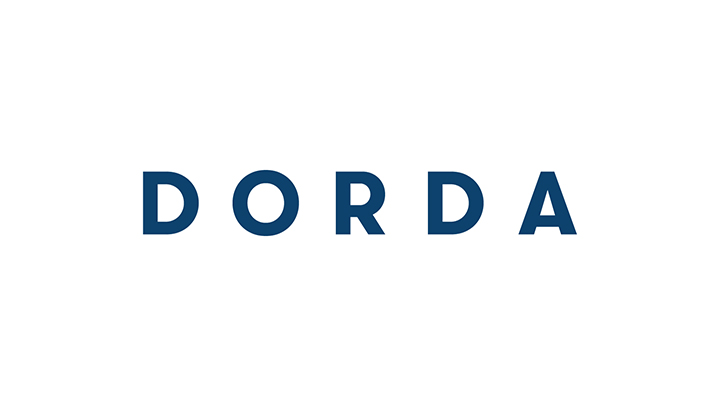ILTA this week released the full results of its 2019 Technology Survey which demonstrates how law firms continue to embrace IT behind other industries.
Of the 537 respondents to this year’s survey, 2/3 are from firms 150 lawyers or less, with the results showing that legal digital transformation has now moved beyond the top AmLaw 100 firms. This blog will discuss how small to medium size organizations can overcome the challenges identified in the survey within their own firms to facilitate technology adoption.
The strategic adoption of technology, often referred to as digital transformation, has helped many firms not only better serve clients by having anytime, anywhere access to documents but also free their IT staff and tech partners to focus on other more strategic projects and value-added work.
ILTA summarized its findings, focusing on many firms’ gains in cloud acceptance, security technologies, AI, and the ever-present struggle of user and management acceptance of change. But the major takeaway for firms with 50 attorneys or less that often are stricken with resource and time challenges is that it’s not too late to catch up to their peers and leverage the same technology used by global law firms and corporate law departments.
They can use the survey data to start the conversation on what peer and aspirational peer firms are doing with their tech partner to secure the support, funding, and resources required to initiate their own digital transformation. But they also should utilize some prescriptive strategies to ease the adoption of technology in their organization so it’s not as disruptive and instead leads to greater efficiency and productivity gains across their practices.
Here are 4 ways small firms can initiate technology change across their practices:
1: Security is a necessary, easy way to begin
With increasing threats and data breaches among many law firms, implementing security technologies should be an easy first step–even for small firms. As protecting client data is extremely important to general councils and other attorneys, getting their buy-in to utilize sophisticated technologies to secure them should be a be a slam dunk.
According to the ILTA survey, 77% of firms already remove administrative rights to desktops, 68% utilize software to thwart phishing threats, and 60% utilize an intrusion detection system. Those impressive numbers tend to decrease a bit the smaller the firm, as only 61% of firms under 50 attorneys remove desktop admin rights, 53% utilize an anti-phishing solution, and 44% use an intrusion detection system.
The challenge is balancing the needed security without introducing friction points to user workflows. However, without 100% adoption of security tools, it only takes a single individual’s credential or unprotected device to cause a breach to damage your organization’s brand and expose privileged client documents.
To ease the transition to more sophisticated security technologies, small firms should look to companies that can offer a platform of solutions that can holistically protect their documents and data. iManage offers a portfolio of security solutions, including:
Threat Manager: Protects client data by detecting, analyzing, and reporting on internal and external cyber threats and can be up and running in two weeks. Further, because it also can monitor typical user behavior, it can identify other types of risks, such as if an individual is planning to leave the firm.
Security Policy Manager: Establishes need-to-know access and other internal global security policies firm-wide without disrupting knowledge management needs. This is critical as it can secure documents across other enterprise solutions, such as file sharing systems.
Share: Enables the secure exchange of Work product with clients, co-council, and outside consultants
2: Cloud services are strategic and reliable
The ILTA survey indicates also that 25% of firms have moved their document management solution to a cloud environment while 72% said they predict their firm’s adoption of cloud-based solutions will increase—an increase of 62% from three years ago.
This means firms now understand that moving to cloud services isn’t going to put their small IT staff or outsourcing partner out of a job, but instead enables them to focus on more specific projects which drive greater profitability rather than mundane tasks like maintaining systems and their associated business continuity plans. Small firms who haven’t moved yet can discuss this benefit with their tech partner to help open the door to looking at cloud environments which allows organizations to have the same security, performance, and resiliency as top firms and corporations.
But firms that are still cloud resistant reported some specific barriers they must account for with cloud services, according to the survey. For example, 30% indicated that performance was one of these concerns and 26% said reliability was another. To help overcome these concerns, firms should educate themselves on the reliability of each cloud solution they evaluate. For example, iManage now has an industry-leading one year 99.991 uptime with its cloud document management solution, which can help allay these fears for small firms looking at a cloud migration. The company also has functionality that enables firms to benchmark the performance they can expect when utilizing our cloud.
3. Match Artificial Intelligence (AI) champions with leading use cases
The ILTA survey indicated that the number of firms researching, piloting, or using AI tools was relatively unchanged from a year ago, with only 7% of firms with 50-149 attorneys fully utilizing it.
As AI gains a foothold in the legal space there are the combined challenges of attorneys understanding the successful use cases of the technology and how AI will ease the burden of routine cognitive tasks but not replace the high value work of interpretation performed by attorneys. Successful AI use cases start with enhanced search, which evolves into deeper document analysis of the knowledge locked within your document management system.
But the key to finding that middle ground and achieve the most benefits from AI is to match the practice areas with the right set of documents with champions who understand the inherent productivity and efficiency derived from the use of AI.
At iManage, our RAVN AI engine seamlessly integrates with our Work solution to help firms unlock knowledge, such as documents, people, matters, or even specific data.
This opens up various AI use cases beyond helping lawyers more quickly find the documents they need. It also can be used to extract and compare data from those documents to help firms work more efficiently. These capabilities can help identify practice areas and workflow to leverage AI’s value.
4. Change management should always be a constant
It’s no surprise that the ILTA technology survey also indicated that user’s acceptance of change was a big tech issue for 41% of responding firms with 50-149 attorneys, as this complaint has been a leading technology pain point in firms for many years. Managing expectations was another related technology issue indicated by 26% of those survey respondents.
Is there ever a way to get over this? Yes, but a change in methodology is required as change management should be an ongoing iterative process to drive adoption of technology. It’s not just something that’s done during project kickoff and go live, but also something that should be maintained on an ongoing basis throughout the whole lifecycle. We see this in the consumer space with our smartphone application having regular incremental updates to reduction disruption and drive adoption of new features.
IT projects always require constant, iterative feedback to ensure they are optimized for all users. It’s never going to be a one-size fits all for firms as people have different ways of learning and getting engaged with technology. Firms must take a deep analysis of user experiences, workflow, and frustrations and then create dynamic programs around them to ensure users don’t get so frustrated they create work arounds or simply stop using the solution. iManage has conducted extensive research on how modern professionals want to work then incorporated those findings into our Work and Share solutions. We continue to work with customers to better understand the journeys they take with our platform so we can better guide them and enhance our solution with functionalities that they need. The company’s proven tools, programs, and support are available for customers to utilize no matter what pace or stage in the adoption journey they are on.
Even small firms can benefit from managing IT change and expectations to achieve the digital transformation benefits their peers are experiencing. Check out more about the features iManage Work offers for firms to learn more.





